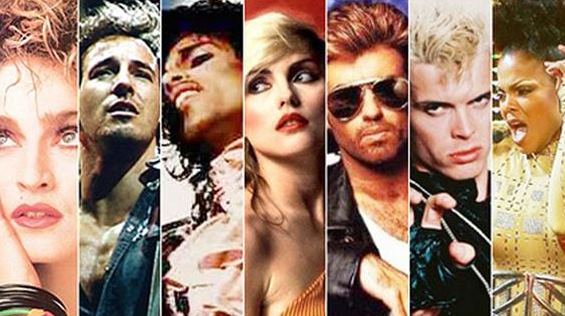Happy Wednesday and welcome to another installment of Song Musings where I break down songs I’ve only mentioned in passing or not covered at all to date. This post is about an underrated, yet compelling band whose name I had known for decades but only started to explore a few years ago: Los Lobos who blend rock & roll, Tex-Mex, country, zydeco, folk, R&B, blues and soul with traditional Spanish music like cumbia, bolero and norteño. My specific pick is Will the Wolf Survive?
Will the Wolf Survive? was co-written by David Hidalgo (lead vocals, guitar, accordion, lap steel, percussion) and Louie Pérez (vocals, drums, bajo quinto), who co-founded Los Lobos in East Los Angeles, Calif. in 1973. The song appeared on their sophomore studio album How Will the Wolf Survive?, their first major label release from October 1984. It also appeared separately as the album’s second single.
Will the Wolf Survive? became Los Lobos’ first charting single in the U.S., climbing to no. 78 on the Billboard Hot 100 and reaching no. 26 on the Billboard Top Rock Tracks. The single also charted in The Netherlands at no. 38. The album peaked at no. 47 on the Billboard 200 and spent an impressive 34 weeks on the chart. Los Lobos were still about three years away from briefly becoming an international household name with their rendition of Ritchie Valens’ 1958 rock & roll adaptation of Mexican folk song La Bamba.
While La Bamba put Los Lobos on the map and is a terrific cover, there is so much more to this versatile group I was fortunate to see a year ago in New Jersey during their 50th anniversary tour. Will the Wolf Survive? is only one of many examples that prove the point. Songfacts explains The “wolf” is a metaphor for a man who is striving to survive in a world that has outcast him: “Running scared, now forced to hide, in a land where he once stood with pride, but he’ll find his way by the morning light.” Here’s a nice live version captured in 1989.
According to SecondHandSongs, Will the Wolf Survive? was covered by outlaw country artist Waylon Jennings in 1986 and The Sidekicks in 2005, who appear to be a studio band associated with L.A.-based independent country and bluegrass label CMH Records. Jennings included the song as the title track of his March 1986 studio album. It also became the second single and a no. 5 hit on the country charts in each the U.S. and Canada.
“It was great!” Perez said of Jennings’ take on the tune, as documented by Songfacts. “Tony Joe White [an American singer-songwriter best known for writing Polk Salad Annie and Rainy Night in Georgia, who collaborated with Jennings – CMM] introduced him to the song, took the record over to him one day, and Waylon recorded his own version.”
Following are some additional tidbits from Songfacts:
The title for this song and album was derived from an issue of National Geographic, which contained an article headed: “Where Can the Wolf Survive?” Drummer and songwriter, Louie Perez, told Rolling Stone this headline resonated with Los Lobos, who had struggled for success in the US having come from Mexican roots: “It was like our group, our story: What is this beast, this animal that the record companies can’t figure out? Will we be given the opportunity to make it or not?”
This song was produced by T-Bone Burnett, who served as a backing guitarist for Bob Dylan before venturing into music production.
The overall theme of the song is about trying to sustain something that the band believed in that they saw slipping away. “We [Mexican-Americans] saw the importance of preserving our culture, and of passing along the traditions of our fathers,” Perez explained to American Songwriter. “So it’s all of that wrapped up into one song. But it’s about America … I always thought of myself as an American kid. I grew up on Carl Reiner sitcoms. It all becomes kind of intuitive. Stuff bubbles to the top when the time calls for it. All of it is instilled into that one song.”
Sources: Wikipedia; Songfacts; SecondHandSongs; YouTube










